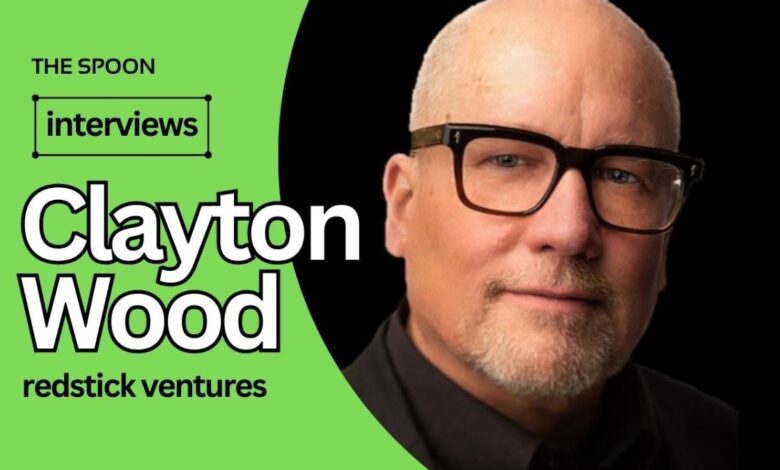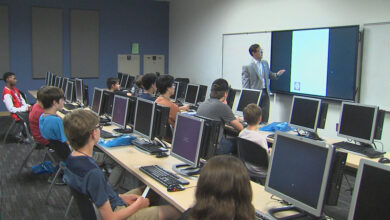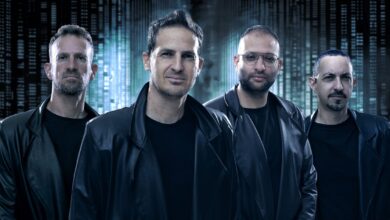Clayton Wood Talks The Current State of Food Robotics

We’re just one month away from the Smart Kitchen Summit, so we’re going to be checking and hearing from some of our speakers.
First up is Clayton Wood, a long-time entrepreneur who has been navigating the food robotics market for the last five years, first as the CEO of Picnic (which debuted its robot at SKS 2019), talking about the challenges and opportunities he sees in this market. You can watch the full interview by clicking play below or read some of the highlights in the transcript below.
Michael Wolf: I imagine that a lot of startups in the food robotics space are probably wanting to get your advice because you ran one of the early pretty successful food robotics companies with Picnic. Talk about some of the conversations you’re having and maybe some of the, are there early stage entrepreneurs in the space that are coming to you say, hey, we have an idea.
Clayton Wood: Absolutely. I started getting inbound interest in being an advisor as soon as I left Picnic, a little over a year ago. I’ve talked to a large number of companies in the space. Many of them are at the same spot, which, given market conditions, isn’t too surprising, which is they’ve got an idea. They’ve probably got a product or a prototype, having trouble raising their first round, having trouble finding product market fit. And just trying to make that leap into kind of being a more mature company. It’s a tough spot under any circumstances, but in market conditions, the last few years have made it especially difficult.
Michael Wolf: One of the things about food robotics is it’s a long path to getting into market. It’s a lot of capital. And with the venture capital winter that is seemingly lasting forever, it seems like a tough time for food robotics companies.
Clayton Wood: It very much is. I know at Picnic, we started in what I finally refer to as the free money era, where you raised one round just to get to the next round, and raising money wasn’t really that much of a question. Now it’s a huge problem. The challenge that food robotics companies have specifically is that as the market tightened up, it became very conservative, and conservative investors don’t like hardware in general.
Food tech is seen as a challenging category of hardware. So if you’re looking at, you know, show me when you’re cashflow positive, show me when you’re profitable. It’s very, very difficult as a food hardware company to show that because it’s such a new field. Product market fit is elusive and being able to say when that those financial metrics will turn right side up is really challenging. It’s just a really tough time for all startups, but I think food robotics, food hardware is especially a challenging category, and has been for the last two or three years.
Michael Wolf: One of the things about Picnic was I felt like it was a next-generation pizza food robotics company and that it was purpose-built around building pizzas. It wasn’t one of these where someone got a general-purpose robotic arm and would just move things around within a confined space. And you’re still seeing those sometimes. What are some of the if you’re giving advice to a food robotics company in terms of building out a system and thinking it through what ultimately may succeed in the market, what would you tell them?
Clayton Wood: Yes.I think it’s one of those signs, you’re absolutely right about the arms and the big footprints. It’s one of those signs of a new, immature market. People haven’t seen food robotics, they don’t know what to think about it. We had people at trade shows looking at the Picnic robot and they’re in the pizza business, and they’re watching it make a pizza and they’re going, ‘does it make the pizza?’ It’s really hard to just wrap their head around it.
I think the challenge, it’s common to a lot of technology companies, but especially true in food robotics, you’ve got to start with the customer. What’s the customer’s pain point, and what can they actually use? And unfortunately, not uncommonly, people start with ‘what can my product do?’ and ‘how can I make it do it in a real fancy, impressive way and how fast can it do it or that sort of thing?’
Those numbers are nice and you get people excited, but it’s not really what the customer needs. And ultimately, the real challenge in food robotics is integration. How will your device get integrated into a commercial kitchen so that the kitchen can continue to operate, do what it needs to do, and do it without disrupting the process? And until there are new concepts that are really built around automation and those are starting to emerge. I used to say no one who has a kitchen has a pizza robot sized hole in their kitchen that they’re just waiting to plug it in.
Michael Wolf: You know, there are a couple of founders out there on the smaller side that I think are innovating. They’re not a big chain. So you see like Andrew Simmons, which I think you talk a lot with. You see Lee Kindell up here in Seattle with Moto. And I imagine there are others that are showing how you can be a smaller operator and almost build your new restaurant concept around utilizing kind of off-the-shelf robotics. It’s not like a Zume, where they raised hundreds of millions of dollars from Softbank and say, ‘Hey, we’re going to build our own robot, do this custom thing.’ These smaller operators are taking a system like Picnic’s and saying, ‘Hey, we’re going to build a new concept that is essentially centered around automation and kind of move forward.’ I feel like they’re pioneering in a sense. Do you think that’s going to be what we’re going to see in the future, more people pioneering concepts that are leveraging automation because they think that can help them scale better?
Clayton Wood: I love to see that. I think Andrew and Lee are brilliant, and I’d say, you know, they’re unfortunately they’re at the far end of the open-minded innovator scale. They’re both kind of willing to move things around and try things, and they’re not just open to innovation, but they embrace it and they seek it out. I don’t think that’s really the persona that I’d use to describe most people in the restaurant business.
If you have that kind of open -minded approach, there’s all kinds of things you could do and you can adapt. If you don’t want to adapt, you say, this is the way I do things. Can you help me? That’s where you run into an integration challenge. But I think what I love about what Lee is doing at Moto and what Andrew is doing with Mama Ramona’s Pizza Roboto is they’re showing how it can work. They’re sharing real world experiences.
Andrew is doing his whole build -in public diary on LinkedIn, which I think is brilliant and super useful because he’s sharing the wins and the losses. But it shows that it can work, you’ve just got to adapt. And I think that’s a lot of the product market fit in these early days is about adapting on both sides. The customer has to be willing to adapt a little bit and the product companies have to go in realizing that regardless of what they may think, they haven’t built a perfect machine and they need to be willing to tweak and change and reconfigure to make the best fit.
Michael Wolf: Okay, you’ve been in this business for half a decade now, you’re advising companies. What are you excited about in terms of food robotics? And are there spaces you think you’d like to see more entrepreneurs or inventors go in terms of building automation around food?
Clayton Wood: I’ve seen some in the home space as well as the restaurant space who are starting out with products that already solve some of the challenges that we’ve seen really block some of the earlier companies. Building devices that are drop-in replacements for a make line, for instance. Acknowledging the fact that if you have the way a restaurant operates, workers are seldom just dedicated to a station standing there all day. The automation needs to work even if the person is only giving intermittent attention. You need to see things like a holding station where if you’re making 10 salads a minute, well, if there’s nobody there to catch the 10 salads, they need to be suitably caught and retained and held there.
And it needs to work around the way the workflow goes in the kitchen, which is multitasking, short staff, and it needs to solve real problems. And the nice thing is you can solve different problems and make it work. I’ve heard people say that, well, the automation didn’t really save me any labor because I only had one person working there anyway. I still need one person working the automation, but the consistency means the cook goes well. The pizzas cook really well because they’re all consistent.
Food waste is another area where food waste is a huge problem, especially in the pizza category, but I think it’s also a problem in other categories as well. If you can eliminate food waste, just food waste alone can pay for the system. So I think if you’re an automation company or product developer, thinking about all the different ways you can add value, but it can only do that if it works with that particular operator.
So you’re going to find the customer who is doing something the way that your machine is designed to do it. If you can make 200 dishes an hour, that’s brilliant and that sounds really impressive, but how many restaurants are making 200 of the same thing every hour? Not that many. And so you may not really have a big market if that’s your claim to fame and that’s really the reason you want somebody to buy it and that’s how your economics work. If people are making 20 an hour, is it still economical? Does it still pay for itself?
Michael Wolf: You mentioned home and you’re seeing some things that are exciting you. And you don’t have to necessarily name names, but home has been really tough to crack for food robotics. And you’re seeing some interesting ones that broke over some of the barriers that were challenging in the past. What are you seeing there that’s exciting?
Clayton Wood: Home is tricky because it’s gotta be, it’s gotta be small. It’s gotta be versatile. Um, it can’t lock you into, you can only do, you can only use it if you buy our packet of pre -packaged food. Um, so I’ve seen one or two players in there who are, who are solving that, who are offering pre -packaged food or recipes, but you can also customize and add your own ingredients, but making a pretty versatile device. So I think that’s a category that has promise, but it’s especially tricky because even if you’ve got something that works brilliantly, you’ve got the whole, it’s a consumer market, and how do you break into consumer markets? You know, got to build a brand and get everybody’s attention. And that’s just, that’s a world that I’m less familiar with. And it’s a pretty daunting challenge to break into that consumer market.
Michael Wolf: All right, well, we’ll be talking about both the restaurant, robotic space, as well as the consumer space at the Smart Kitchen Summit. Lee Kindell will be there. Clayton, you’re going to be there as well, June 4th and 5th in Seattle. And I’m excited to see you there, man.
Clayton Wood: Looking forward to it.
You can hear Clayton at Smart Kitchen Summit on June 4-5th in Seattle. Get your ticket today!



